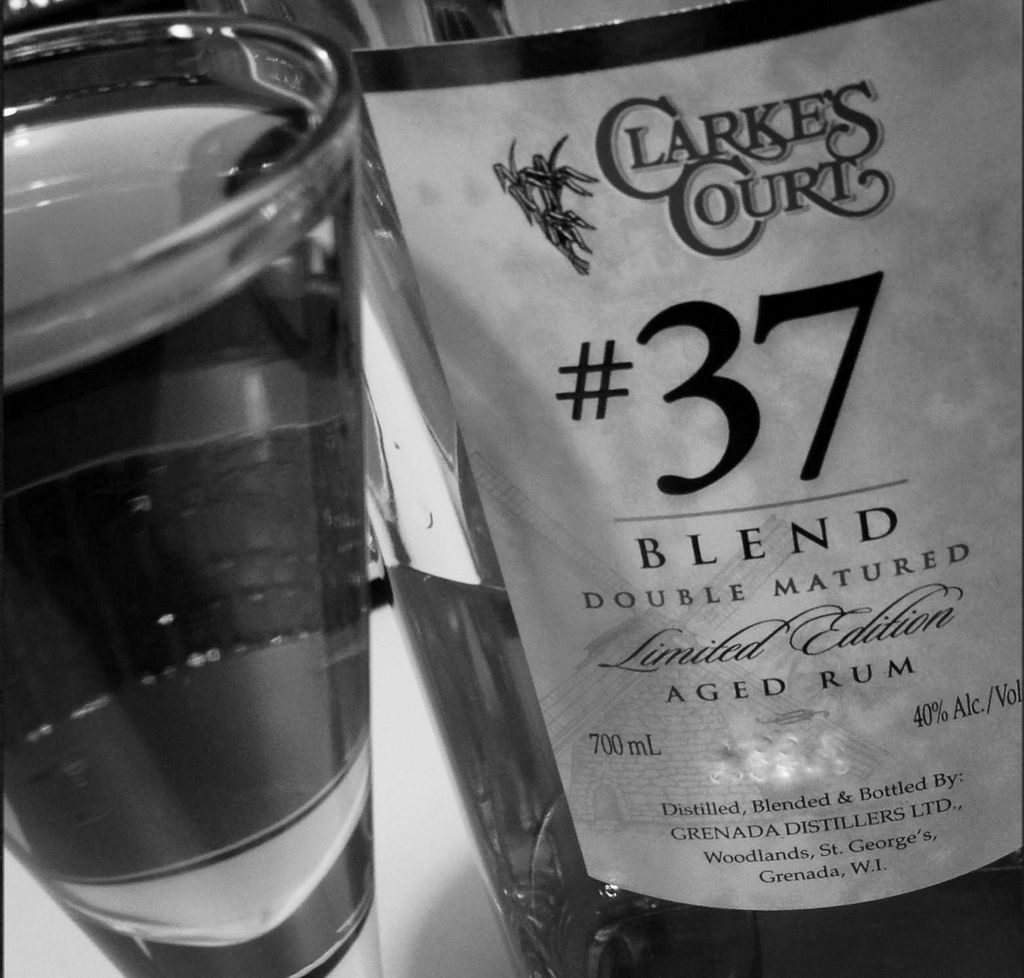
The Masters of Malt blurb for the Grenada-distilled Clarke’s Court No. 37 rum contains two sentences that make one both smile and ask more questions. A “blended Caribbean rum” which is “the thirteenth limited release rum from Clarke’s Court.” And as if trying to top that, they go on to say “The rum was designed to be supplied to exclusive social events” and both just reek of some marketing intern making ad copy in his sleep, evidently unable to come up with anything more interesting about this equally lackadaisical rum.
Why not a “Grenadian” rum, one wonders. And, if this is the 13th edition, why is it called No. 37? Is it related to the possible year of establishment of Grenada Distillers Ltd? Unlikely, because the 1998 book Grenada: Island of Conflict by George Brizan notes that as being 1936, though admittedly the Clarke’s own website notes the factory as becoming operational in 1937. An anniversary of independence? But that was 1974 so 37 years later would be 2011. Dave Russell of the Rum Gallery probably nailed it when he said it was issued to commemorate independence, and the 300th year of establishment of St. George’s (not strictly right – it was started much earlier – but the star-shaped Fort Royale, later St George’s, was indeed completed in 1710).
Where are the other 12 editions, then? Or No. 1 through No. 36? No records exist. Further research reveals that it’s a blend, released in 2010 and was aged for 8 years in oak barrels, and with current editions of the No. 37 blend also being released at 12 years of age. The Ultimate Rum Guide remarks it was married and then rebarreled with more fruit flavour infused (oh oh…) but this is backed up nowhere else except in hydrometer tests, which also point to additives. Lastly, while the Fat Rum Pirate noted his assumption as being a pot and column still blend, His High Wonkiness says there’s only a two-column still at Grenada Distillers, with which they occasionally make some heavier rum from plates lower down in the column and mix that into the lighter stuff from plates higher up.

Picture copyright Charlene Gooding, from Pinterest
It’s a good thing I did this research after I did the tasting, because all these questions and backstories that filled in the sadly lacking label and website info, came later, and didn’t influence my initial opinion. Alas, that opinion wasn’t all that terrific either. Which is odd in itself, because the experience started out quite solid – the nose, for example, was warm, a little spicy, and smelled initially of molasses bubble gum and soda pop. Quite sweet smelling, and got deeper than the above might imply or the strength would suggest. Nice tropical fruit basket too – guavas (the red ones), bananas, mangoes, watermelon, gherkins, plus toblerone white, almonds. Nicely creamy. Some soft salty notes, like dates and figs. Creme brulee and caramel. Irish coffee. So…nice.
It’s on the palate that it sinks, and some of the falsity shines through. Weak and wispy to a fault. Bubble gum and fanta. Light citrus, pears, more mangoes and guavas, but oddly muted, as if they aren’t sure they’re supposed to be here (this is usually a good indicator of tampering). White chocolate, crushed almonds, a hint of nutmeg, nuts, vanilla, some salt caramel ice cream. There’s even some light fresh (and I swear I’m not making this up) laundry detergent kinda taste. Overall, just unimpressive, with a finish that has to knock twice to make sure it’s heard, let alone noticed, and gives little beyond some miscellaneous fruits and a bit of tart yoghurt to let us know it was ever even there.
It’s a peculiarity of the rum that it said it was limited, but never actually how limited – the label has a bottle number, but not a “…out of xxx bottles” statement. So it’s hard to say what’s special or limited about the whole thing, especially as it continues to be made to this day and the year of distillation of the bottle one has is not mentioned. Moreover I can almost guarantee that few reading this know anything about it unless they went on a cruise down to the island themselves, or — like me, Chip, Dave and Ed — date back from those days a decade or more back, when the standards for both rums and labels were very much less exacting than they are now and we accepted what we got with gratitude at getting anything at all.
However that was then, and those same easy standards and low strength fail the rum in this day and age. It’s nice enough for the unadventurous and indifferent but in no way is it as premium as it makes out it is. It’s weak, it’s not well assembled, the years it slept actually seem like less, and it’s been added to. Therefore, to me, it’s an average rum of no distinction or special individuality — and so I think I’ll close this already-overlong review by just giving it an average sort of score.
(#792)(77/100)